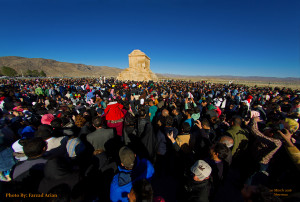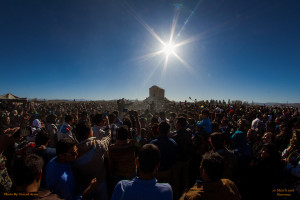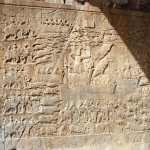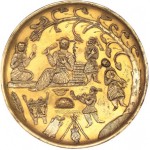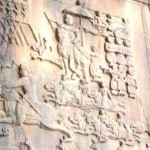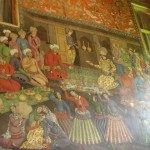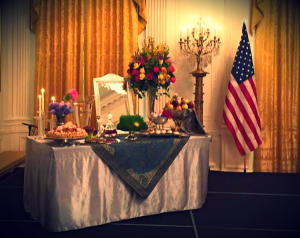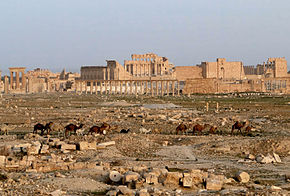 Just a few days ago, the Syrian forces recaptured the city of Palmyra and some of the images offer hope amid ruins. According to the reports in several international news outlets some parts of the ancient citadel seem to have survived occupation by Islamic Terrorists ISIS.
Just a few days ago, the Syrian forces recaptured the city of Palmyra and some of the images offer hope amid ruins. According to the reports in several international news outlets some parts of the ancient citadel seem to have survived occupation by Islamic Terrorists ISIS.
The Terrorist group has destroyed some of Palmyra’s most treasured artifacts, including the Temple of Bel and the Arch of Triumph. However, some of Palmyra’s ruins appear to have survived, including the Agora and the celebrated Roman theatre. The Photographs taken following the recapture of the city of the UNESCO world heritage-listed site, known as “the bride of the desert”, show the damage made by ISIS during its 10-month occupation.
While many experts expected the worst, the Syrian government is now sending a team of archaeologists to Palmyra in the coming days to assess the damage to its monuments, and the government is pledging to rebuild the destroyed temples and arch.
However, another immediate danger still remains. It is believed that while the terrorists were leaving, they left hidden mines behind around the city and also in many historical and archeological sites. Therefore, the troops are now working on clearing mines from the town and its monuments, where numerous booby traps were laid down by the militants before their retreat.
The city of Palmyra and the area had been taken over by the ISIS terrorists in May 2015. The terrorists are responsible for damaging or destroying all six of Syria’s UNESCO’s World Heritage sites, which Palymra is one of. Other sites include the pilgrimage site of Bosra, Crac des Chevaliers – one of the most important and well preserved medieval castles – and Qal’at Salah El-Din. Aleppo and Damascus are also UNESCO sites and have suffered after fighting, along with the ancient villages of Northern Syria.
A French team of digital surveyors from ICONEM are working with archaeologists from the Syrian Directorate General of Antiquities and Museums (DGAM) to preserve the historic sites by creating detailed 3D maps of the sites.
City of Palmyra Recaptured from ISIS
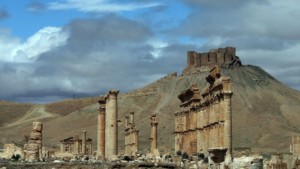 Syrian government forces, backed by Russian air power, have recaptured the ancient city of Palmyra from the Islamic State of (ISIS) after days of intense fighting.
Syrian government forces, backed by Russian air power, have recaptured the ancient city of Palmyra from the Islamic State of (ISIS) after days of intense fighting.
The Britain-based Syrian Observatory for Human Rights said gunfire could still be heard in the eastern part of the city on Sunday morning, but that the bulk of ISIS’s forces had retreated.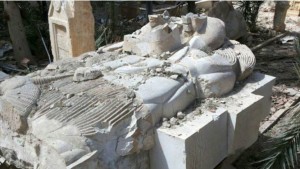
Palmyra, known as the “bride of the desert”, used to attract tens of thousands of tourists a year before the conflict started in 2011.
The army was now trying to dismantle booby trap bombs in some of the city’s neighborhoods, sources told Al Jazeera
First Day of Nowruz at Pasargadae – 2016
Happy Nowruz – March 20, 2016
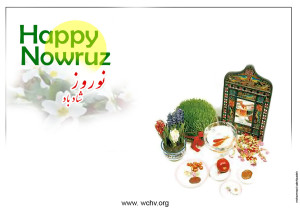 Nowruz is first day of Spring and the beginning of the Iranian year. Nowruz is celebrated on the day of the vernal equinox, on 21st March or the previous / following day depending on where it is celebrated. Nowruz is celebrated and observed by Iranian people as well as several other countries across Asia including Afghanistan, Turkey, Azerbaijan, Georgia, Tajikistan and many more. The new year starts at the moment the Sun crosses the celestial equator and equalizes night and day or exactly when the Earth has completed one cycle around the Sun.
Nowruz is first day of Spring and the beginning of the Iranian year. Nowruz is celebrated on the day of the vernal equinox, on 21st March or the previous / following day depending on where it is celebrated. Nowruz is celebrated and observed by Iranian people as well as several other countries across Asia including Afghanistan, Turkey, Azerbaijan, Georgia, Tajikistan and many more. The new year starts at the moment the Sun crosses the celestial equator and equalizes night and day or exactly when the Earth has completed one cycle around the Sun.
The celebration has its roots in Ancient Iran. Due to its antiquity, there exist various foundation myths for Nowruz in Iranian mythology. The Shahnameh dates Nowruz as far back to the reign of Jamshid, who in Zoroastrian texts saved mankind from a killer winter that was destined to kill every living creature. In the Shahnameh and Iranian mythology, Jamshid is credited with the foundation of Nowruz. In the Shahnama, Jamshid constructed a throne studded with gems. He had demons raise him above the earth into the heavens; there he sat on his throne like the sun shining in the sky. The world’s creatures gathered in wonder about him and scattered jewels around him, and called this day the New Day or No/Now-Ruz. This was the first day of the month of Farvardin (the first month of the Persian calendar). On Nowruz, families gather together to observe the rituals and celebrate the beginning of the new year.
In addition, it is believed that originally the celebration was the holiest Zoroastrian festival, and Nowruz is believed to have been invented by Zoroaster himself, although there is no clear date of origin. Since the Achaemenid era, the official year has begun with the New Day when the Sun leaves the zodiac of Pisces and enters the zodiacal sign of Aries, signifying the Spring Equinox.
International Nowruz Day was proclaimed by the United Nations General Assembly, in its resolution A/RES/64/253 of 2010, at the initiative of several countries that share this holiday (Afghanistan, Albania, Azerbaijan, the Former Yugoslav Republic of Macedonia, India, Iran (Islamic Republic of), Kazakhstan, Kyrgyzstan, Tajikistan, Turkey and Turkmenistan.
World Cultural Heritage Voices
Ancient Nowruz artifacts from the Sassanian Dynasty – 224 CE to 651 CE.
Nowruz during the Safavid Dynasty circa 1501 to 1722 and 1729 to 1736.
Nowruz table ,and Persian New Year celebration in the White House
Nowruz Award for Dr. Abdolmajid Arfaee
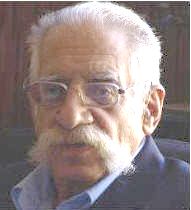 Dr. Abdolmajid Arfaee, is a unique expert of ancient languages of Akkad and Ilam and a researcher in the history of Ilam. He is one of the exceptional authorities and translators of cuneiform scripts in the world.
Dr. Abdolmajid Arfaee, is a unique expert of ancient languages of Akkad and Ilam and a researcher in the history of Ilam. He is one of the exceptional authorities and translators of cuneiform scripts in the world.
Dr. Arfaee is the recipient of “The Nowruz Prize” for the best personality of the year 2016, in the category of “Cultural Heritage”. He receives the award for:
– His lifelong perpetual efforts in support of preservation of cultural and historical heritage of Iran.
– Creating the first translation of the Cyrus the Great cylinder from its original language.
– His Collection of unique treasures of periodicals, magazines, pamphlets and books about the history of Iran and the world, and the texts of many ancient scripts on stone and clay, with the cooperation of Dr. Parviz Natel-Khanlari.
– Organizing a dedicated section of the Iranian National Museum to inscriptions and epigraphs.
– Reading and translating a large number of Persepolis clay inscriptions, as well as legal texts of Mesopotamia.
– And his unique collection of research and writings on Iranian history and culture.
Dr. Arfaee is one the most distinguished contemporary linguists and researchers of the Iranian history whose contributions to the field have not been appreciated adequately. He was the first Iranian to get involved in the saga of important Persepolis clay inscriptions that are the very documents, narrating the important aspects of Darius the Great era. Dr. Arfaee studied for eight years at the oriental section of Chicago University in order to read the Persepolis clay inscriptions. In Chicago, he worked under the supervision of Professor Richard Hallock, the famous authority on Ilam’s script and language. After the advent of the Islamic Revolution in Iran, Dr. Arfaee was no longer allowed to continue his work on the inscriptions and could no longer work at the Iranian Center for Literature and Arts, together with other authorities like Dr. Parviz Natel-Khanlari. Even though he was separated from his field of work and research, he did not stop his work and efforts. For the last few years he has been engaged again in reading and deciphering the Persepolis clay inscriptions, providing the young generations with the proud history of their Persian ancestors.
Nowruz Awards for Nikahang Kowsar
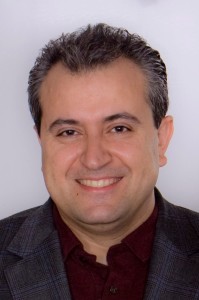 Mr. Nikahang Kowsar, an earthologist and environmental activist, is the Personality of the Year 2016, in the category of “Environment and Natural Heritage” for:
Mr. Nikahang Kowsar, an earthologist and environmental activist, is the Personality of the Year 2016, in the category of “Environment and Natural Heritage” for:
– His invaluable efforts to promote and increase people’s knowledge of the environment and natural heritage of his country, Iran.
– His ability to utilize his journalistic talent for preservation of environment and natural heritage.
– The publication of hundreds of articles and reports, as well as production of numerous videos in order to inform the public about the environment and natural heritage issues.
– And establishing a successful NGO with the aim of spreading knowledge about the subject.
Mr. Kowsar’s activities have become important and significant contributions in informing public and keeping the relevant issues alive in the critical and very sensitive area of water resources management and conservation of Iran’s environment.
Despite the fact that Mr. Kowsar was threatened in Iran due to his journalistic activities, and was eventually forced to flee his country, he has continued his activities both in Canada and Iran. He has continued using the free media and media outlets effectively for expanding knowledge of natural heritage and environmental issues amongst his compatriots and encouraging them to become active in the preservation of such treasures.
Nikahang Kowsar bio:
Nikahang (Nik) Kowsar, is an Iranian-Canadian cartoonist and journalist residing in Washington D.C. Born in Tehran, Kowsar, 46, studied Geology and Sedimentology in Iran and Journalism in Canada and has worked for the media, environmental organizations and non-profits since 1991.
Growing up in Iran, he learned a great deal from his father on aquifer management projects and from his mother who is a painter.
Kowsar joined Golagha satirical magazine while studying Geology in 1991 and later became a staff cartoonist of Hamshahri Newspaper in 1993. He was a staff cartoonists and editorial board member of a number of newspapers before leaving Iran in 2003. He was also a managing editor of the bilingual Newsletter of the International Rainwater Catchment Systems from 1996 to 1997.
Nikahang wrote numerous Op-Eds criticizing the water management in Iran and alerted the President on the negative impact of building hundreds of dams without paying attention to the water loss in aquifers and on not having a national program for reversing the situation in 2001.
He ran as an environmentalist in the 2003 City Council elections creating the “Green Coalition”, where all groups lost to Ahmadinejad’s Abadgaran.
Kowsar was arrested in 2000 for one of his cartoon that had triggered a 4 day protest in the holy city of Qum and caused a national security crisis before the parliamentary elections. He left Iran for Canada in 2003 after receiving a death threat, where his family joined him 4 years later.
He has worked as an editor and assistant editor, radio producer and cartoonist for Marketwire, IFEX, Radio Zamaneh and Roozonline and has been running Khodnevis.org as the editor-in-chief. He is a member of the New York Times Syndicate and is on the board of directors of Cartoonists Rights Network International. He produces Abangan, a weekly video show on drought and water crisis in Iran that’s aired by Andisheh TV/Ofogh-e Iran satellite TV Channel.
Nikahang is the recipient of 3 Crystal Pen Awards of the Iranian Press Festival and International Courage Award for Editorial Cartooning from CRNI and Honorary Diplomas from The Canadian National Press Club and Tolentino Caricature Contest in Italy.
Nowruz Award for Mohammad Ali Inanloo
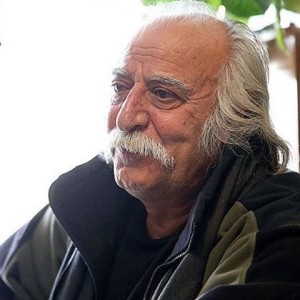 The prize for the best filmmaker and artist of the year 2016, in the category of natural heritage and environment goes posthumously, to Mr. Mohammad Ali Inanloo who was an expert and producer of documentaries on environment and natural heritage of Iran and one of the pioneers of educating people on ecotourism, Mr. Inanloo’s activities also included the followings:
The prize for the best filmmaker and artist of the year 2016, in the category of natural heritage and environment goes posthumously, to Mr. Mohammad Ali Inanloo who was an expert and producer of documentaries on environment and natural heritage of Iran and one of the pioneers of educating people on ecotourism, Mr. Inanloo’s activities also included the followings:
– Forty years of systematic activities in introducing the exceptional environment of his country, Iran to his compatriots.
– Producing numerous TV programs that entailed his vast travels to many unknown corners of his country.
– Ceaseless enthusiasm to attract the attention of his audience to issues and problems inflicting Iranian natural heritage and environment.
– Pioneering in setting up ecotourism classes with the aim of teaching the correct methods of enjoying and dealing with the environment.
Mr. Inanloo worked on Iranian nature and environment for 40 years. His perseverance and enthusiasm to introduce the subject and encourage the appreciation of nature was unsurpassed. His travels in Iran covered 2 million kilometers, resulting in numerous documentaries, programs and articles. Although his activities were mostly centered in the government radio and TV, he never participated in anti-culture and anti-national programs and confined his cooperation to teaching and propagating his beloved subject of nature and environment.
Nowruz Award for Abangaan NGO
– Establishing itself as a non-governmental institution, dedicated to the preservation of natural heritage, environment, and especially water resources of Iran. It is not a secret that there are grim and critical conditions for natural heritage in Iran There is also a continued intentional and non-intentional negligence of relevant authorities, who also block activist and NGOs to continue their work for the conservation of environment and national heritage. The situation has resulted in the formation of Abangaan NGO outside Iran by a number of experts and people who are interested in the field of environmental conservation and in bringing this subject to the attention of the public through optimal use of the available media. Although this organization is less than one year old, the members of this NGO have excelled in their cause despite the lack of financial and technical facilities.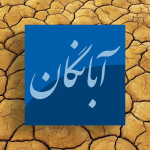 Abangaan NGO: The recipient of “The Nowruz Prize” for the best civil society of the year 2016, in the category of “Natural Heritage”, for:
Abangaan NGO: The recipient of “The Nowruz Prize” for the best civil society of the year 2016, in the category of “Natural Heritage”, for:
– Gathering a number of American- Canadian- and European-Iranian young activists working on the above subjects.
– Striving to elevate and expand public education on such subjects through setting up discussions among experts and professionals.
– Production of educational and informative videos on relevant subjects.
Within the span of last six months, Abangaan NGO has been able to interview more than 20 experts, researchers in the field of environment who come from academic, political, cultural and artistic walks of life. These interviews have been compiled in a number of 26 minutes videos and have been broadcasted in Ofogh-e-Iran TV programs and later posted on the internet. Being of educational and analytical benefits, the videos have already attracted a vast number of audiences from all over the world and especially from Iran.
Their excellent work so far deserves much appreciation.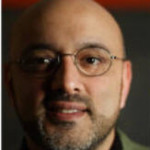 Sam Khosravifard (Msc. in Environmental management), is a PhD candidate in the field of natural resources science at University of Twente, in the Netherlands. Mr. Khosravifard has been working as a journalist since 1996, focusing on environmental issues of Iran. He has published more than one thousand articles and analytical reports regarding Iran’s natural and environmental issues. He is author of two books; “Persian Lion” and “Natural Heritage of Iran”, published by the Cultural Research Bureau.
Sam Khosravifard (Msc. in Environmental management), is a PhD candidate in the field of natural resources science at University of Twente, in the Netherlands. Mr. Khosravifard has been working as a journalist since 1996, focusing on environmental issues of Iran. He has published more than one thousand articles and analytical reports regarding Iran’s natural and environmental issues. He is author of two books; “Persian Lion” and “Natural Heritage of Iran”, published by the Cultural Research Bureau.
As a consultant biologist, Mr. Khosravifard collaborated with “Conservation of Asiatic Cheetah and Its Habitats Project”. Through collaboration with United Nations Development Programme (UNDP) and The Department of Environment of Iran, he participated in the preparation of the second phase of the project. Mr. Khosravifard also taught ecotourism and wildlife/nature photography in specialized institutions.
During the last ten years, he has been working with more than five consulting companies in order to prepare environmental reports and documentations for decision makers of Iran.
Mr. Khosravifard is an experienced wildlife photographer. He also directed a documentary about the presence of raccoons in Iran titled: “Raccoon; an Intrusive Guest in Iran”. He currently lives in Toronto, Canada and is working on another documentary about the history of implementation of modern conservation in Iran.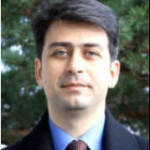 Mr. Kambiz Ghafuri, an Iranian journalist living in Finland, has worked with and written reports for international media such as: Finnish Journal of Foreign Affairs (a publication of Finnish Institute of International Affairs), Finnish Broadcasting Company (YLE), AJAM TV in USA, Radio Zamaneh, Radio Kucheh. He is a member of Association of Iranian Journalists, SFJ, Suomen Freelance Journalistit (Finland), Association of European Journalists. In addition to producing independent TV programs and writing articles and participating in interviews relevant to political and social issues, he has been talking to important personalities in the Oral History Project, as well as covering artistic activities of Scandinavian societies such as the alternative documentary festival of Tempo in Sweden.
Mr. Kambiz Ghafuri, an Iranian journalist living in Finland, has worked with and written reports for international media such as: Finnish Journal of Foreign Affairs (a publication of Finnish Institute of International Affairs), Finnish Broadcasting Company (YLE), AJAM TV in USA, Radio Zamaneh, Radio Kucheh. He is a member of Association of Iranian Journalists, SFJ, Suomen Freelance Journalistit (Finland), Association of European Journalists. In addition to producing independent TV programs and writing articles and participating in interviews relevant to political and social issues, he has been talking to important personalities in the Oral History Project, as well as covering artistic activities of Scandinavian societies such as the alternative documentary festival of Tempo in Sweden.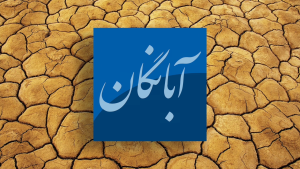
Iranian New Year Named: The Celebration of Mahasti Ganjavi
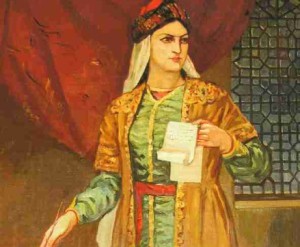 Every year, on the advent of each Iranian New Year (which coincides with the beginning of spring), Pasargad Heritage Foundation (PHF) designates a name for the coming year that signifies a certain aspect of its mission. PHF is an organization established a decade ago outside Iran with the aim of preserving Iranian cultural heritage and has observed this name designation for the last 10 years. The main purpose is to emphasize on the priceless values of the ancient cultural heritage of Iran that are exposed to constant destruction due to intentional and accidental negligence of the relevant authorities in that country.
Every year, on the advent of each Iranian New Year (which coincides with the beginning of spring), Pasargad Heritage Foundation (PHF) designates a name for the coming year that signifies a certain aspect of its mission. PHF is an organization established a decade ago outside Iran with the aim of preserving Iranian cultural heritage and has observed this name designation for the last 10 years. The main purpose is to emphasize on the priceless values of the ancient cultural heritage of Iran that are exposed to constant destruction due to intentional and accidental negligence of the relevant authorities in that country.
The coming New Year of the Iranian calendar has been named as the “Year of Mahasti Ganjavi”, to commemorate a Farsi-speaking courageous poetess of 900 years ago who thought and spoke about the very subject matters that are expressed today by great anti-discrimination women of our times.
She was born in Ganje, an Iranian city that now is located in Azerbaijan Republic, before the language of that area was turned into Turkish. Thus, she is now being introduced as an Azerbaijani poetess whereas all her poetry is in Farsi.
Unfortunately, all through history, religious zealots have banned the spread and publication of her poetry in as many ways as possible. And then, by the advent of the Islamic Republic in Iran, she has been officially been recognized as a non-Iranian poet and the Islamic government has not accepted even to co-apply, together with Azerbaijanis, for the registration of her name as a poetess of Farsi literature in the Intangible Heritage Index of UNESCO.
Proposed by Pasargad Heritage Foundation
Nowruz: The Most Magnificent Act of Civil Disobedience in Contemporary History
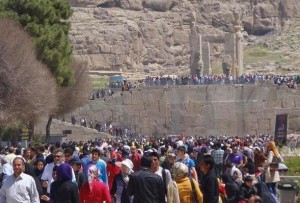 -Written by Shokooh Mirzadegi-
-Written by Shokooh Mirzadegi-
What is “civil disobedience?” It is defined as a non-violent struggle or protest against a method, policy or issue that the power apparatus imposes on its people.
As an admirer and practitioner of the non-religious culture of Iran, I claim that, based upon the above definition, and during the last 38 years, the movement to observe the ancient ceremonies related to Nowruz (the new day of the New Year in Iranian calendar, beginning on the first day of spring) which is observed by millions of Iranians, has turned into the largest and most magnificent case of civil disobedience of our time.
This movement took shape immediately after the advent of Islamic Revolution in Iran (1978) and it has been alive and active, contrary to all the Islamic government’s efforts to stop it through security-manipulations and/or religious pretext. The movement has grown rapidly and has expanded to other rituals related to Nowruz such as Charshanbeh-Suri (The fire festival) and Sizdah-bedar (celebration for the end of two-week long Nowruzi festivities).
A few weeks before the beginning of spring, Iranian people, very similar to an organized, nicely trained and proud army, begin their preparation for the ceremony of welcoming their New Year, a heritage of their pre-Islamic civilization. The Islamic government calls the ceremony a fire worshiping practice of pagans but people observe their Charshanbeh-Suri festival. The government calls them unbelievers and they jump over burning bonfires. They forbid it restrictly and they continue their fire ceremony. it threatens them with prosecution and arrest and they carry on their joyful festivities.
The Islamic government does not approve of dancing and happy gatherings and bans such activities during the Nowruz period. People do not pay attention. The government issues military ultimatums and religious decrees while people ignore them all. The Islamic government puts them in jail but they continue the ceremony as soon as they are released.
The Islamic government spends huge sums of money for its many religious festivities, aiming to stop Nowruzi rituals (that are registered by UNESCO as a part of mankind’s intangible heritage), and looks for some occasion related to the death of religious personalities coinciding with Nowruz in order to stop the ceremonies.
Nevertheless, Iranian people, with the ascending fragrance of Spring in their chests, observe the Nowruzi ceremonies every year and on an ever expanding dimension. The government puts them under severe economic hardships but the people, just like dutiful soldiers, bear the hardship and continue their civil disobedience, fighting to keep their traditions, and continue flying the victorious flag of Nowruz.
I have arrived at this conclusion: Our people, some of them even without being aware of the fact, are going through the process of “survival of the fittest” and based on the Darwinian “natural selection”, endeavor to weather the hardships and remain alive through clinging to their ancient culture which is filled with essence and elements of happiness, beauty, kindness and productivity; a culture that can act as the best antitoxin for their government’s atrocities.
This year too, the 38th anniversary of our people’s civil disobedience begins by the arrival of the Spring and the admirers of Iran’s culture continue their struggle against an anti-culture force just to keep their natural rights of being free and happy. The result would inevitably be the defeat of the stern army of freedom haters and happiness killers.

